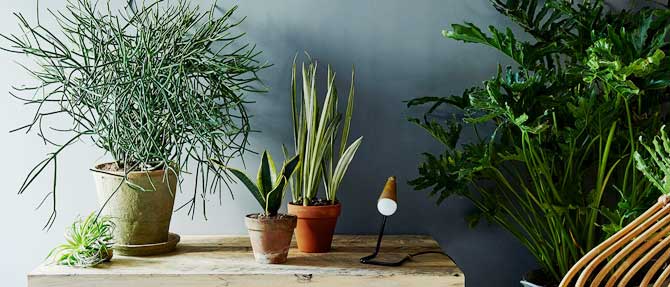Common Houseplant Problems
House plant popularity has recently soared and with that so have the cries for help when it comes to diagnosing problems. As with all plants, the best way to keep your indoor green friends healthy and free of pests and disease is to ensure you choose the right plant for the right location. Don’t be tempted to try to make a plant you love the look of work in unsuitable conditions. If it’s not clear on the plant label, ask our in store experts for advice – they’re happy to help!
If your houseplant is positioned in a spot that’s not too dark or too light and you water and feed it as required, it should thrive and remain looking gorgeous and healthy. However, sometimes it can take a little time to understand our plants likes and dislikes so this article should help you identify potential problems with your indoor plants so you can get them back on track quickly.
Defoliation
Dropping flower buds or leaves is caused by temperature fluctuations, drafts or lack of humidity. If air conditioning or heating is a contributing factor try filling a saucer with pebbles and water and sitting it beneath your pot. Or spritz the plant occasionally with a water sprayer.
Silver or red blotches on foliage
Your plant is getting too much direct sun and is being burnt.
Gradual defoliation (lower leaves yellow and falling off)
Incorrect watering is the most common cause of this problem. It could be an indication of root damage due to over watering or not enough water to support full foliage. It could also be due to lack of light or fertiliser. To check whether watering is the issue, pick up the plant regularly to check the weight, if it feels lighter than usual then it’s time to water, if it feels heavy then watering is not needed. Check out how and when to water your houseplants
New growth is wilting or burned
This could be a range of potential causes including excess fertiliser (leaching will be needed to save your plant), cold drafts, hot drafts, too dry, too warm, sunburn or freeze damage. Again if your plant is in the correct position consider your air conditioning or heating or if you could be over-fertilising.
Entire plant has wilted
If the plant is thirsty this will happen and to avoid over watering it can be suitable for many indoor plants to let them wilt slightly before giving them a deep drink. If the plant has been watered regularly you may have over done it and the plant could be suffering root rot. Otherwise over-fertilising and exposure to cold temperatures can also cause this problem.
Spotted foliage
Possible causes of spotted foliage are over watering (check roots for signs of rot), burn from direct sun, cold water on foliage, fungal infection (especially if plants are in humid and/or wet conditions) or pollutants in the air.
Foliage pale and weak
This is likely to be due to insufficient light conditions but could also be that conditions are too dry for the plant (either soil or air) or a lack of nutrients meaning it could do with some fertiliser.
Browning of leaf tips or edges
Browning of leaves can be caused by lack of humidity, using the wrong fertiliser or using too much, poor water quality (high chlorine, fluoride, sodium, boron, soluble salts levels), incorrect soil pH, spray damage from insecticides, oil or leaf-glossing materials or even environmental pollutants in the air.
Stunted plants
Stunted plants are a result of root damage by either excess fertiliser or too little or too much water.
Tiny insects on leaves
This could be whitefly, aphids or thrips. Isolate the affected plant and treat with Tui Indoor Plant Insect Spray or Gro-Sure Houseplant Insect Control Spray.
Fuzzy grey mould that covers flowers, leaves and stems
It’s likely Botrytis blight which is a fungal disease generally caused by dead leaves and spent flowers being left on the plant, too much humidity or poor ventilation.

